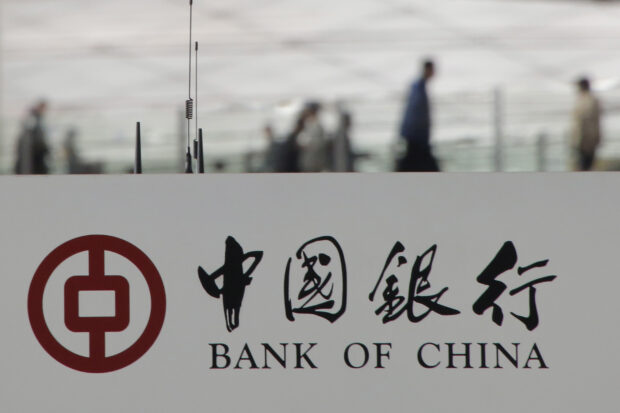China’s top banks tighten exposure to smaller peers, sources say

Pedestrians are seen behind the logo of Bank of China on its ATM machine in Beijing, China, March 28, 2016.REUTERS/Kim Kyung-Hoon/File photo
Some of China’s top banks have sharpened scrutiny of smaller peers’ asset quality and have tightened standards for interbank lending, three sources said, in an effort to curb credit risk as a deepening property debt crisis ripples through the economy.
Two of China’s biggest state-owned banks and a leading joint-stock bank have stepped up reviews of smaller lenders over the past couple of months to identify those with poor asset quality and have a high risk of default, the sources said.
The two state-owned banks have decided to reduce interbank lending limits and set shorter maturity periods for smaller peers deemed high risk, said two of the sources.
All the sources, who spoke on condition of anonymity due to the sensitivity of the issue, have direct knowledge of the matter.
The move comes amid growing worries about the health of the smaller banks in the world’s second-largest economy, as a deepening property sector crisis and ballooning local government debt make them the weak link in the financial system.
READ: Contagion fears spread as China property sector cash crunch intensifies
The cautious approach taken by some big banks in dealing with smaller peers could exacerbate capital woes for the latter as they have fewer other fundraising options, which could force Beijing to step in with more supportive measures.
While the larger Chinese banks mainly use customer deposits – a stable and long-term funding source – to make loans, in recent years smaller lenders have been aggressively borrowing from local rivals to raise funds.
China’s mid-sized and smaller banks account for roughly half of the trading volume in the interbank lending market, data from the China Foreign Exchange Trade System (CFETS), which is overseen by the central bank, showed.
One of the sources, a senior official at the leading joint-stock bank which is among those to review credit exposure to smaller peers, said the bank had tightened its criteria for lending to smaller banks.
As part of that, it has stopped purchasing bonds issued by smaller banks that have total assets below $40 billion, said the source.
Liquidity gap
The People’s Bank of China (PBOC) and the National Financial Regulatory Administration, the watchdog overseeing all aspects of China’s $63-trillion financial sector, did not respond to Reuters request for comment.
As China grappled with the impact of the slowing economy on the financial system, the local authorities have been taking measures to support the banking system, especially the smaller ones to maintain financial stability.
READ: China ramps up liquidity support to banking system
As part of those measures to prevent financial risks, some of China’s local governments sold record amounts of so-called special bonds last year to inject capital into troubled small regional lenders.
The state media reported last month, citing the Central Economic Work Conference held on Dec. 11-12, during which top leaders set economic targets for 2024, that it was necessary to effectively resolve risks in small and medium-sized banks.
Although roughly 4,000 small banks are not by themselves seen as a systemic risk, the concern is that enough of them have largely funded themselves via short-term money market borrowing, posing a collective danger in the event a few of them fail.
Greater use of interbank lending for funding purposes makes banks more sensitive to counterparty risk.
Big Five
While the country’s Big Five banks, including the likes of Industrial and Commercial Bank of China and Bank of China, dominate the sector, smaller banks still account for a quarter of assets, according to regulatory data.
The second source at one of the big state-owned banks said some of the small lenders his firm had reviewed and deemed risky were in highly indebted areas such as parts of Northeast China, the Inner Mongolia region, and Henan province.
Rates for negotiable certificates of deposit (NCDs), usually a routine fundraising tool for small lenders, have risen steadily since August, partly due to a liquidity gap in recent months amid a heavy debt supply.
The interest rate on one-year NCDs sold by small and medium-sized rural commercial banks reached 2.84 percent in mid-December, the highest level since August, according to a research note by Chinese brokerage TF Securities.
READ: China banks step up sales of bad loans as consumer defaults rise
In a sign of growing stress, 10 small and medium-sized banks have defaulted on commercial paper at least three times over six months last year, according to a statement released on Nov. 30 on the Shanghai Commercial Paper Exchange website.
The banks include regional lender Ningxia Helan Rural Commercial Bank Co. Ltd., based in northwest China’s Ningxia region, and Shaanxi Baoji Weibin Rural Commercial Bank Co. Ltd., located in northern Shanxi province, the statement said.